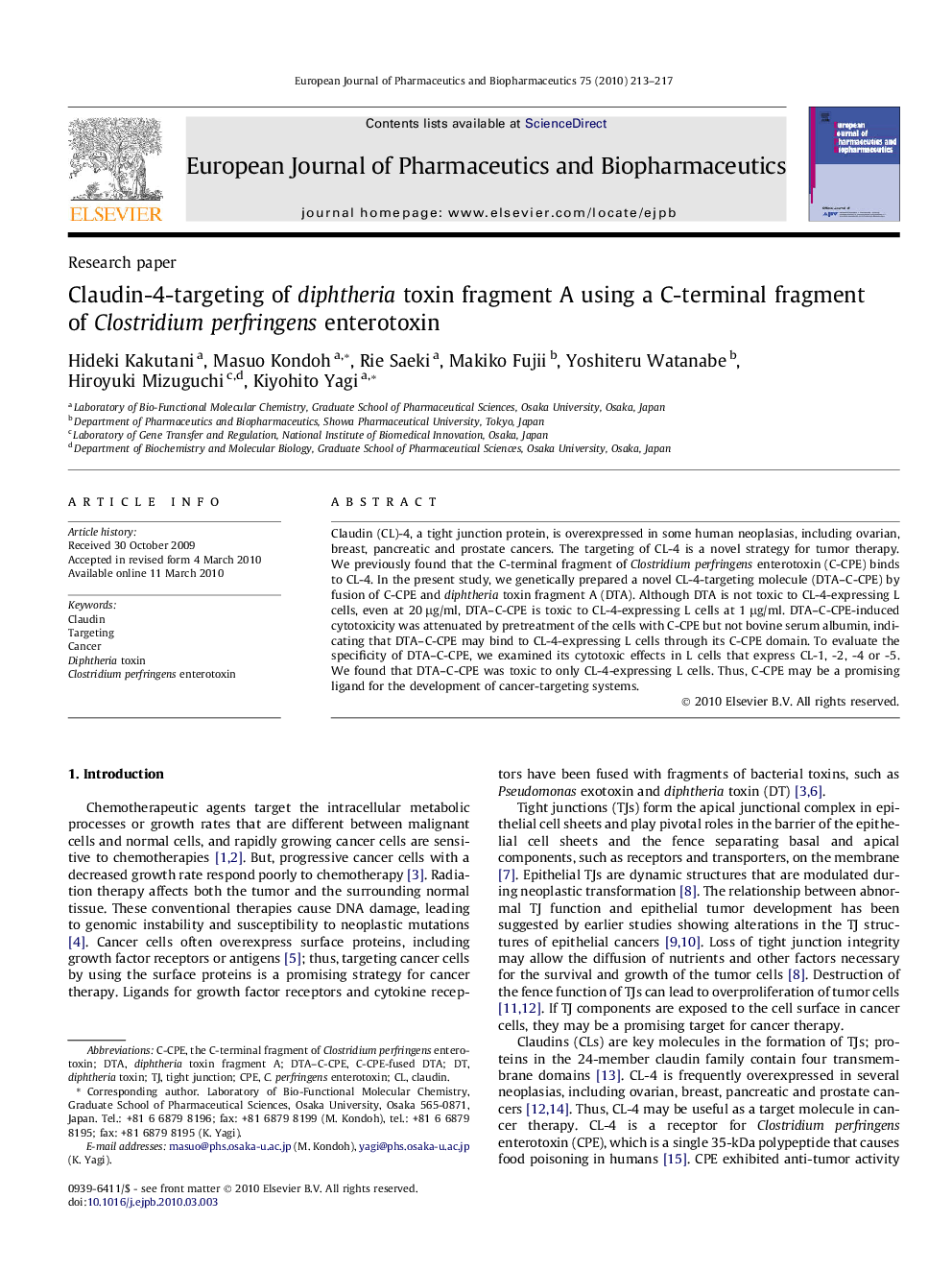| Article ID | Journal | Published Year | Pages | File Type |
|---|---|---|---|---|
| 2085521 | European Journal of Pharmaceutics and Biopharmaceutics | 2010 | 5 Pages |
Claudin (CL)-4, a tight junction protein, is overexpressed in some human neoplasias, including ovarian, breast, pancreatic and prostate cancers. The targeting of CL-4 is a novel strategy for tumor therapy. We previously found that the C-terminal fragment of Clostridium perfringens enterotoxin (C-CPE) binds to CL-4. In the present study, we genetically prepared a novel CL-4-targeting molecule (DTA–C-CPE) by fusion of C-CPE and diphtheria toxin fragment A (DTA). Although DTA is not toxic to CL-4-expressing L cells, even at 20 μg/ml, DTA–C-CPE is toxic to CL-4-expressing L cells at 1 μg/ml. DTA–C-CPE-induced cytotoxicity was attenuated by pretreatment of the cells with C-CPE but not bovine serum albumin, indicating that DTA–C-CPE may bind to CL-4-expressing L cells through its C-CPE domain. To evaluate the specificity of DTA–C-CPE, we examined its cytotoxic effects in L cells that express CL-1, -2, -4 or -5. We found that DTA–C-CPE was toxic to only CL-4-expressing L cells. Thus, C-CPE may be a promising ligand for the development of cancer-targeting systems.
